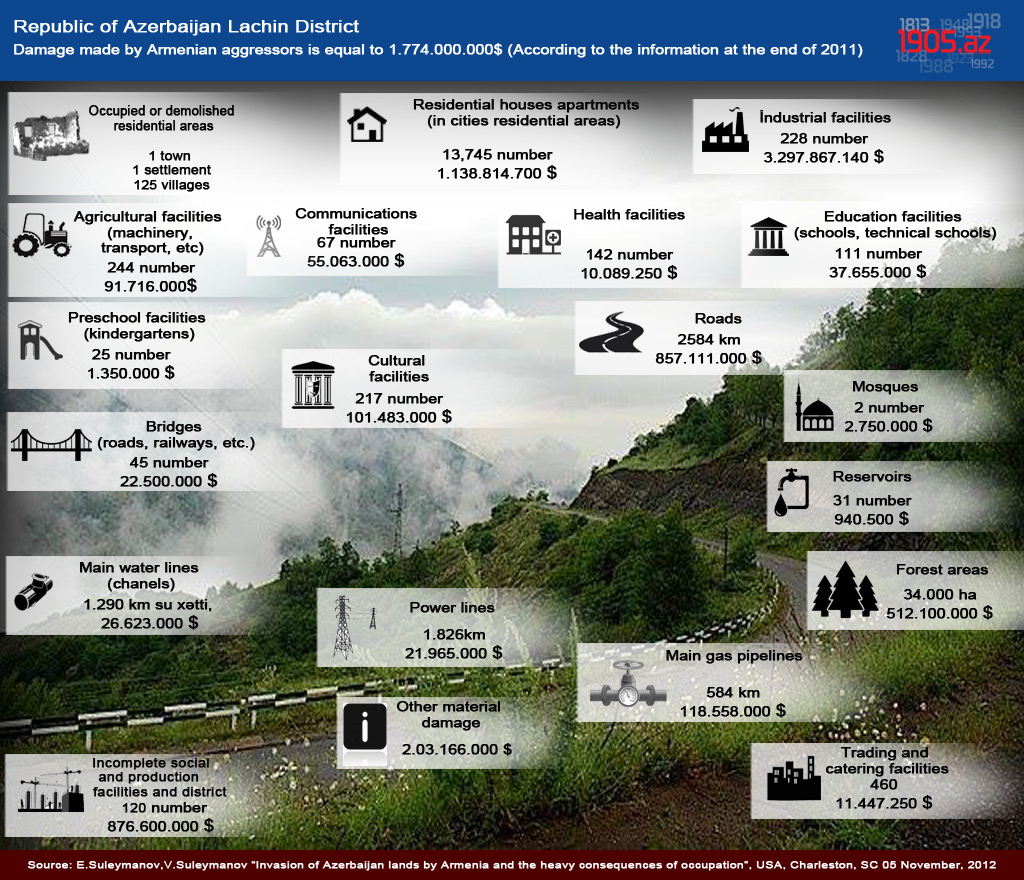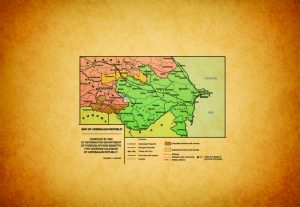
Historical Azerbaijan

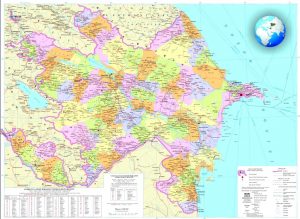
Republic of Azerbaijan
With the adoption of the Constitutional Act on Independence on October 18, 1991, a new stage of the Azerbaijani history in the 20th century started. Before that time, Armenia conducted military operations against Azerbaijan with the assistance of the Soviet, later Russian military and political circles.
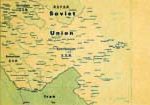
Soviet Socialist Republic of Azerbaijan
On April 28, 1920, the Soviet Socialist Republic of Azerbaijan (Azerbaijan SSR) was established in the territory of the Democratic Republic of Azerbaijan, which collapsed as a result of the military aggression of the Soviet Russia. As a response to the appeal of the Provisional Revolutionary Committee of Azerbaijan on concluding an alliance based on mutual trust and recognition, a telegram was sent to the Soviet Azerbaijani government on May 5 by V.I.Lenin on behalf of the Soviet of People`s Commissars of the RSFSR who declared the recognition of the independent Azerbaijan.
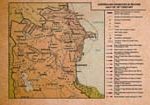
Khanates of Azerbaijan
The history of Azerbaijan in the second half of the 18th century there were independent and semi-dependent states named khanates. The birth of the first independent khanates in the territory of Azerbaijan dates back the 1740s. Some of them appeared after the fall of the rule of Nader Shah while the others were established during his reign as a result of the struggle against Iran.
Shaki Khanate
The Shaki Khanate established by Haji Chalabi Khan (1743-1755) turned into a powerful political force at the end of the 1740s. The sultans of Gabala and Gutgashen had to recognize the authority of the khan of Shaki. In 1751, the provinces of Gazakh and Borchali were also subjected to the Shaki khanate for a certain period. Having concluded an alliance in 1768, the khans of Shaki and Guba attacked the Shamakhi Khanate and divided it. The city of Shaki was the cultural center of the Shaki Khanate.
Garabagh Khanate
The Gharabagh Khanate founded by Panah-Ali khan Javanshir (1748-1763) strengthened during the period of struggle against Iran. Taking the advantage of the frictions between the heirs of Nader Shah, Panah-Ali khan expanded his authority and influence up to Ardebil. A representative of the Ziyadoglu dynasty backed by Panah-Ali khan, who interfered the affairs of Ganja, ascended to the throne there. He expanded his estates and subordinated the provinces of Tatev, Sisian, Gafan, and Mehri. In 1755-1756, Panah-Ali khan moved his capital to the marvelous castle of Panahabad built on the top of a high, precipitous rock. The castle was later renamed Shusha after Shushakend nearby. Ibrahim-Khalil khan, who succeeded his father Panah-Ali khan, sought to unite the Azerbaijani lands. He could spread his influence to the khanates of Nakhichevan, Ganja and Tabriz in certain periods.
Guba Khanate
Husein Khan, the founder of the Guba Khanate (1726-1758) was appointed khan by the Russian czar in 1726. During his reign, Salyan and Rudbar were subordinated to Guba. The rise of the state was related to Fatali Khan.
He succeeded to annex the khanates of Salyan (1755), Derbent (1759), Baku (1766), Shamakhi (1768), and Javad (1768). In the 1760s, the Guba Khanate was superior economically, politically and militarily to the most of the khanates of Azerbaijan and played an important role in political life of the country.
Lankaran (Talysh) Khanate
The political and economic center of this khanate founded by one of the major local feudals Seyyid Abbas bey was the walled town of Lankaran. When Seyyid Abbas died in 1747 he was succeeded by his son Jamaladdin Mirza bey, often remembered as Gara Khan. His reign witnessed a political stability and economic development in the khanate.
Baku Khanate
Upon the death of Nader Shah in 1747, the local feudal Mirza Muhammad Aga drove the shah`s representative Salim out of Baku and declared himself an independent khan (1747-1768). The Baku Khanate did not distinguish from other khanates politically and militarily. Its territory
was very small, of 60 versts in width and 90 versts in length. Along the entire Absheron Peninsula, the city of Baku and 39 villages formed the khanate. During the reign of the successors of Mirza Muhammad Khan, the Baku Khanate became a dependency of Fatali Khan of Guba. With the marriage of his sister Khadija Bika with Malik Muhammad Khan of Baku in 1766, Fatali Khan secured the dependence of the Baku Khanate on Guba Khanate.
Ganja Khanate
The khanate was based upon the Ganja beylerbeyi (principality) ruled hereditarily by the Ziyadoglu dynasty of the Gajar tribe from the 17th century until 1804 with brief intervals. The founder of the khanate was Shahverdi Khan Gajar. Ganja was of great military-political and socio-economic importance. Since its establishment it was a target for the neighboring feudal lords. The Ganja khans had to maneuver among the powerful enemies.
Derbent Khanate
Due to his cruel internal policy, Muhammadhuseyn Khan, the founder of the principality, won the hatred both of the masses and many representatives of feudal elite. At the request of the commonDerbent population, Fatali Khan of Guba marched into Derbent in 1759. With the help of the people, he took control of the khanate. Ever since, the khanates of Derbent and Guba became a unified state until the annexation of the northern khanates of Azerbaijan to Russia.
Shamakhi Khanate
The Shamakhi Khanate emerged as a result of the persistent struggle of local feudal lords and nobility against the foreign and domestic enemies. Having served as the capital of the Shirvanshahs and Shirvan principality for several centuries, Shamakhi maintained its economic and commercial importance until the end of the 18th century. Fundamental changes took place in the political life of Shamakhi after the fall of Nader Shah. In a relatively small area there appeared two khanates: New Shamakhi with its center in Agsu and the Old Shamakhi with its center in Shamakhi. The dual power in Shamakhi could not last long. Having strengthened his position in Old Shamakhi, Muhammad Said Khan seized New Shamakhi in 1763 and incorporated it into his possessions. The Old Shamakhi became the center of the new khanate. However, it was obvious that Shamakhi was open for attacks of the neighbouring feudals. Frequent attacks damaged the economic development of the Shamakhi Khanate, which was then annexed by Fatali Khan of Guba in 1768.
Nakhchivan Khanate
The Nakhchivan Khanate was established by Heydarguly Khan of the Kangarli tribe. In order to strengthen the khanate and protect it from invasions, Heydarguly Khan (1747-1763/64) relied on the more powerful Garabagh Khanate during the first years of his reign. Following Heydarguly Khan`s death, the Nakhchivan Khanate weakened as a result of struggle for power, which lasted till 1787 and became a target for fight among the khanates of Khoy, Garabagh, Erivan, Kingdom of Kartli-Kakheti and Iran.
Erivan Khanate
The Erivan Khanate was established on the basis of the principality of Cokur Sad. The local feudal lord Mir Mehdi, who led an anti-Iran uprising in Erivan after Nader Shah`s death, declared himself khan and founded
the independent Erivan Khanate. However, it could not cover the entire territory of the former principality, as part of its lands was included into the Kananate of Nakhchivan and other khanates. The center of the khanate was Erivan.
Garadagh Khanate
The Garadagh Khanate was one of the weak principalities in the Southern Azerbaijan. Its founder was the wise ruler of one of the nomadic tribes Kazim Khan (1748-1752), who pursued a prudent policy in regard to the neighboring feudal lords, was more engaged in internal affairs and constructions, built various public buildings in his capital Ahar. The Garadagh Khanate lost its independence after being occupied by the combined forces of Khoy and Garabagh khanates in 1782.
Tabriz Khanate
Its founder was Najafgulu K han (1745-1780), a prominent representative of the Dunbuli tribe. He got firmly established in Tabriz with the assistance Fatali K han Afshar of Urmia. Therefore, the Tabriz khanate was dependent on Urmia for some time. The Tabriz Khanate gained full independence after the defeat of Fatali K han Afshar by Karim K han Zend in 1763.
Maragha Khanate
The Maragha Khanate was founded by Aligulu K han Mugaddam (1747-1750). This unimportant principality enjoyed independence until Mohammad Khan Qajar came to power.
Ardebil Khanate
The founder of the Ardebil Khanate was the head of the Shahseven tribe Nazar Ali Khan (1747-1783) during whose reign the khanate developed. Through marriage diplomacy Nazar Ali Khan created friendly relations with I brahim K han of Garabagh and enjoyed good-neighborly relations with the Lankaran Khanate.
Urmia Khanate
The leader of the Urmia Khanate was Fatali Khan Afshar (1747-1763). Aimed at expanding his borders, he succeeded in taking possession of a large area in the Southern Azerbaijan within a brief time. The Urmia Khanate lost its previous importance after being defeated by Karim Khan Zend in 1763.
Khoy Khanate
The first ruler of the Khoy Khanate was Shahbaz khan (1747-1763). He was appointed governor of the Khoy province during the rule of Nader Shah. He declared himself independent ruler of Khoy following Nader Shah`s death. Pursuing a moderate policy, Shahbaz khan maintained friendly relations with Fatali Khan Afshar.
Maku Khanate
The founder of the Maku Khanate was Ahmed Sultan (1747-1778), leader of the Bayat tribe and one of the commanders of Nader Shah. Having returned to his native land upon Nader Shah`s death, Ahmed Sultan declared himself khan of the newly-established Maku Khanate. The capital of the khanate was Maku surrounded by mountains on two sides. The Maku Khanate included 30 adjacent villages.
Sarab Khanate
The Sarab Khanate was established by the leader of the Shagaggi tribe Ali khan (1747-1786). Taking advantage of the chaos upon Nader Shah`s death, Ali khan declared himself khan among his tribesmen.
Besides the above-mentioned khanates, there existed the Javad Khanate in the intersection of the Rivers Kura and Arax and the small Salyan Khanate in the mouth of the River Kura.
According to the treaties of Gulistan (1813) and Turkmenchay (1828) concluded between Russia and Iran, Azerbaijan was divided between the two empires: the northern part of Azerbaijan was annexed by Russia, while the Southern Azerbaijan was incorporated into Iran.
«Azerbaijani states in history»,
Baku, 2012, p.142-147
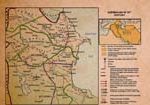
Azerbaijani state of Safavids
In XVI century Azerbaijan was the socio-economic, political, cultural, and ideological center of the Safavid state (1501-1736). It included Azerbaijan, Iran, the Southern Turkmenistan, present-day Afghanistan (excluding the province of Balkh), the Arabian Iraq and other territories.The Azerbaijani Safavid state was founded by Shah Ismail I.
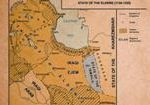
State of Atabeys (Ildenizids) of Azerbaijan
The independent sultanates, which emerged after the decline ofthe Seljuqs, originated new state entities.



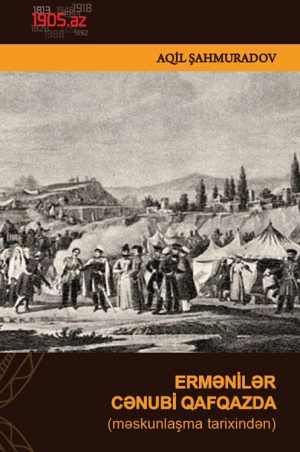





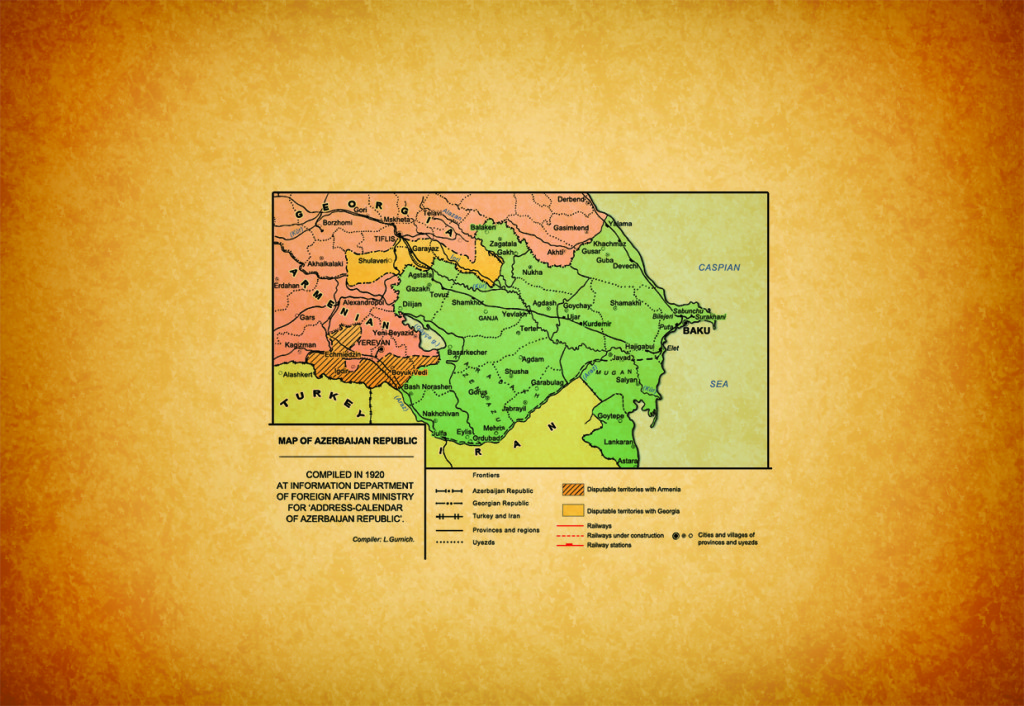
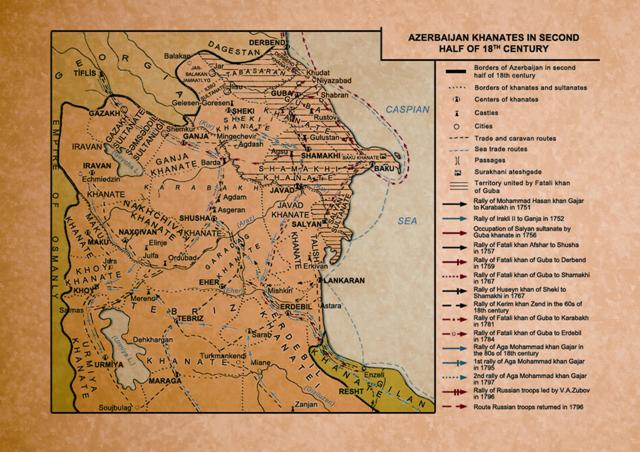
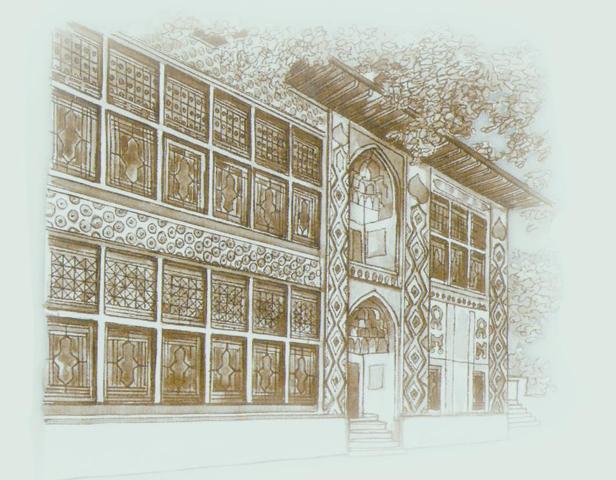
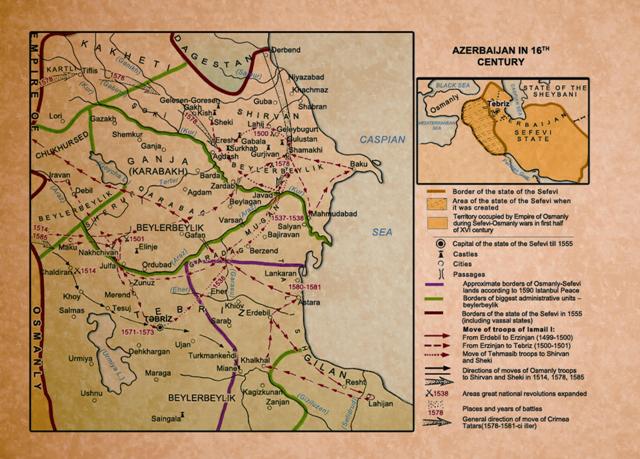

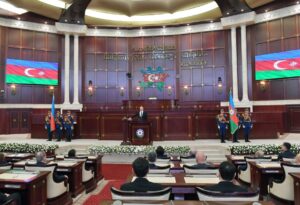 Inauguration ceremony of President of Azerbaijan Ilham Aliyev was held
Inauguration ceremony of President of Azerbaijan Ilham Aliyev was held Ilham Aliyev wins presidential election with 92.05 percent of votes VIDEO
Ilham Aliyev wins presidential election with 92.05 percent of votes VIDEO President Ilham Aliyev, First Lady Mehriban Aliyeva and family members voted in Khankendi VIDEO
President Ilham Aliyev, First Lady Mehriban Aliyeva and family members voted in Khankendi VIDEO Plenary session of 6th Summit of Conference on Interaction and Confidence Building Measures in Asia gets underway in Astana. President Ilham Aliyev attends the plenary session VIDEO
Plenary session of 6th Summit of Conference on Interaction and Confidence Building Measures in Asia gets underway in Astana. President Ilham Aliyev attends the plenary session VIDEO President Ilham Aliyev was interviewed by Azerbaijani TV channels in Prague VIDEO
President Ilham Aliyev was interviewed by Azerbaijani TV channels in Prague VIDEO













